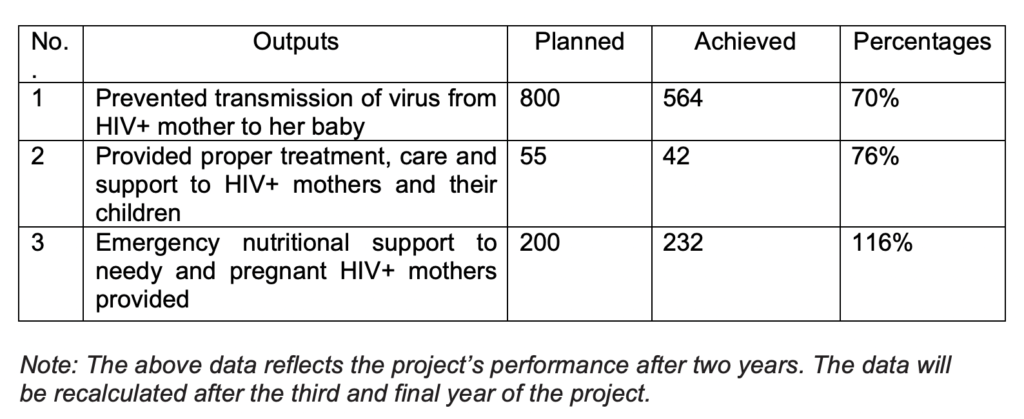Grant Recipient Describes Project to Prevent Mother-to-Child Transmission in Ethiopia
Last year, the Coalition for Children Affected by AIDS and ViiV Healthcare’s Positive Action awarded $40,000 in grants to eight organizations that could show how the use of social protection supports HIV testing, treatment, and care for children in low- or middle-income countries. Each winner received $5,000 to produce a scientific article, video, or written case study to show what works.
One of the winning proposals was submitted by the Center for Development and Capacity Building (CDCB) to document its pilot project to prevent mother-to-child HIV transmission in Ethiopia. Based in Addis Ababa, CDCB is a civil society thinktank and nonprofit focused on research and tailored capacity building. The organization conducts trainings, organizes forums and dialogues, and implements innovative projects to be scaled up by government and development partners in Ethiopia. The Coalition spoke to CDCB Executive Director Amanuel Adinew to learn more about the program.

Q: Can you tell us about your project and how it got started?
Our main objective was to improve antiretroviral therapy (ART) adherence for pregnant mothers, newborn babies, and adolescents. In 2011, only 24% of HIV-positive pregnant women received antiretroviral therapy in Ethiopia, and 90% of those were lost in follow-up within 18 months of delivery. Our pilot was designed to help HIV-positive mothers and their children stay in treatment. We wanted to see if we could improve mother-to-child transmission rates by tracing lost patients and providing training to the health professionals, local authorities, and workers at heath facilities.
We received financial support from ViiV Healthcare’s Positive Action for Children Fund and launched the project in partnership with Dawn of Hope, a local NGO, in January 2018. We are currently working through government-owned clinics and one private hospital in three towns in the Oromia Regional State—Dukem, Bishoftu, and Mojo—which are all known to have high rates of HIV.
Q: What methods are you using to achieve your goals?
We are using a multi-pronged approach. We have HIV-positive volunteers who raise awareness and campaign for HIV testing at local high schools. Those who test positive are enrolled in counseling and connected to a local HIV support association. We have also trained healthcare workers to identify HIV-positive women at the clinics and enroll them in counseling. Pregnant women are being checked early for HIV and receiving ART to improve the odds that their children will be born without the virus. If women stop coming to appointments, the local HIV associations and PLHIV volunteers help reach out to them and encourage them to come in. We’re also helping vulnerable families generate income and access proper nutrition.
Q: How are you helping HIV-positive mothers generate income?
During the first year of the project, we used the local community associations to identify HIV-positive women and lactating mothers living in poverty. Ten women were chosen from each site, and we worked with them to design a cooperative business project. One group opened a very small roadside café and coffee shop, another is fattening cows and reselling them, and another is baking and selling bread. We provided job training to each group, helped them get a cooperative license, and supplied seed money to each business. These women have seen their incomes improve and are hopeful about continuing to grow their businesses. The café is facing serious challenges this year due to the COVID-19 pandemic, but the other cooperatives are continuing to thrive despite the difficult circumstances.
Q: What kind of results have you seen?
Based on the data we’ve collected so far, the project has been successful at preventing new HIV infections among women of reproductive age, reducing unintended pregnancies, and preventing the transmission of the virus from mother to baby during birth.

However, there is still much work to be done. When we began the pilot, we didn’t realize the full extent of the problem. In the communities where we are working, HIV is continuing to spread. Bishoftu, Dukem, and Mojo are located near major highways leading out of Addis Ababa, making them a hotspot for day laborers and truckers who pass through and engage with local sex workers. Many of these young men are from rural areas and aren’t aware of HIV and how to prevent it. To effectively prevent mothers and children from acquiring HIV, we must get at the root of this problem as well.
Q: What’s next for the project?
The pilot is slated to end in 2021. We would like to expand it to other areas of the country with high rates of HIV.
Read more about CDCB’s pilot project in the case study it produced for ViiV Healthcare and the Coalition.